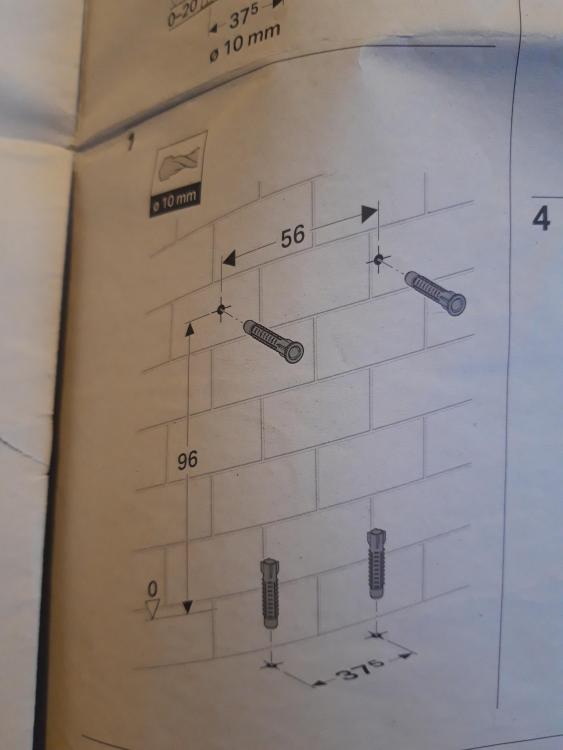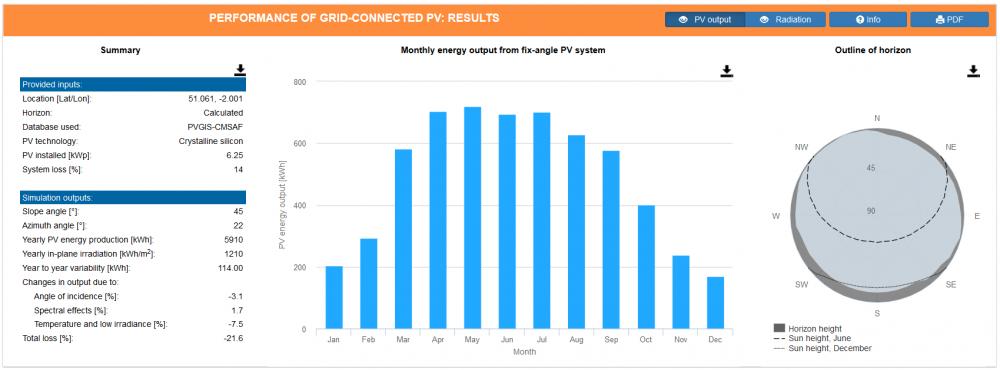Leaderboard
Popular Content
Showing content with the highest reputation on 02/18/20 in all areas
-
Hang on...the drill size for that plug is on the Geberit instruction sheet!2 points
-
This is nothing unusual at all. Standard detail for garage ceiling with habitable rooms above is two layers of 15mm fireline plasterboard, the pink one 15mm thick, with the joints taped and filled, and the joints of the two layers staggered. You will have thick joists for the spans you have so plenty of room for a decent amount of insulation. build in a taped air tight membrane under the floor and taped up to meet the wall air tight layers and that's your details sorted out.2 points
-
Up to 15mm then use something like a Weber Pro leveling compound - they are final wear surface and can be laid 3-15mm thick2 points
-
Sure. At root it is "my word is my bond" between people who trust each other. I have known the family for a number of years, and their parents were former tenants (with a number of labrador retrievers) who rented a slightly difficult property from me for 2-3 years (which was quite doggable since the plan was to turn it into a road and they rented knowing that it would be time limited). Parents were trying to set up for retirement, so I suggested such a deal to them as Ts/friends - subsequently a grown up offspring was getting married (one partner had previous children), and they asked me to think about the same for them, as their credit was seriously shot (6-7 years recovery shot). I did that whilst the couple were renting elsewhere. They found one house, which I warned them off as it would be a stretch and needed 20k spending. Then they found this one, which fitted the bill - after 2 years or so. A early 20C semi in an unusual situation renovated (not that well but to Regs standard) by somebody else. The deal itself was for: 1 - Initial 3 year fixed rent at a little below market (ie take bottom of the suggested range from EA) for a slightly easier on-ramp. 2 - Ignore credit checks ?. To be fair the parents would have stepped in - that sort of people. 3 - Letter of intention giving the not-quite-binding right to purchase at half way between purchase price and market price at purchase point, adjusted for any long term expenditure - eg my extra 3% Osborne Stamp Duty, I have fitted a ventilation system and a loft storage area (loft legs), and they have built a small conservatory economically (which I made them insulate properly) and fenced the garden. In practise it will be 20 minutes horse trading. 4 - 3 years are nearly up so I get to put it back to a market rent plus a bit from this year (had conversation about it last summer), now that maternity leave is over and they will have 2 incomes again. 5 - When their credit is back they get to buy it as above. The "not quite" in 3 is just in case my business melts down entirely (unlikely). So I get (hopefully) a low risk and OK rental investment (7% yield ish), and they get to have a family home, do stuff, be secure and have an easier way onto the housing ladder. Estd. 75% chance of a one way bet for both sides imo. At the end of the day my arse is covered as I still have the house should things go entirely wrong, or they not follow through, and it is slack I can afford to cut for people whom it helps make significantly happier / more secure. A more usual thing is for LLs to leave rents fixed for years and years in cash terms for really long term Ts on fixed incomes; a lot do that. Also quite commn to offer first refusal of a sale to a sitting T. At the end I will get a reasonable increase, which hopefully will be small enough to not engage CGT, and they get a house at maybe 10-15% below true value (hopefully within the negotiating margin so avoiding Below Value issues) and may end up with a lower mortgage percentage at the end of the day. In 2.5 years property is up by about 16%, so we are both safe if it doesn't spontaneously fall down. It's a little intricate and very bespoke, but that's the deal. I would do another one in the right circs, though it takes care and I would not have more than a small number of them at once, as it is all tighter now. F2 points
-
The picture in my blog entry shows the basic set up. CU to AC isolator to inverter to DC isolator to PV panels. I also have a meter so I know what I'm generating (fitted between the AC isolator and inverter)2 points
-
1 point
-
CT1 all day long. In fact the instructions with my frame kit for my eclisse door recommends attaching with silicone.1 point
-
No, the pv panel clamps are not the reason this might (or might not) happen. Installation best practise and buying the right materials is key to this.1 point
-
There's loads of critical content missing from your summary. I have in front of me the unredacted CINCFLEET BoE report, as a photocopy of the original typewritten report. What you've written is not in that report, and distorts many of the facts. Where it came from I don't know, I suspect a bit of dodgy journalism from the sound of it. This is events as reported by CINCFLEET in the BoE report: In the days prior to the attack the TG had been achieving reliable airborne detections out to 160 miles, and as a consequence of this, together with attacks being concentrated on the NGS group closer inshore, they stopped going to Actions Stations and State 1 Condition ZULU when at Air Warning YELLOW. The decision was made for the TG to only go to Action Stations when the Air Warning state was RED. On the day of the attack, the two attack aircraft were detected at a range of about 40 miles by the 965 on HMS Glasgow. HMS Glasgow went to Action Stations and fired Chaff D, believing the detections to be valid and reported them to the rest of the TG. HMS Invincible had radar paints at 30 miles and 50 miles range but CAP subsequently failed to find them. The AAWC onboard HMS Invincible did not accept HMS Glasgow's target classification as valid (perhaps because there had been many false classifications that they believed were induced by ESM) and declared the contacts to be spurious. This was relayed to the other ships in that group, including HMS Sheffield. ZIPPO 4 was not called by AAWC and the Air Warning remained YELLOW (YELLOW was the normal operational state for the TG within the TEZ). At about 15 miles range the two Super Etendards passed HMS Glasgow and turned towards HMS Sheffield. At the time of the attack, HMS Sheffield was operating overtly, with all systems transmitting. It was later suggested that this could have had an impact on the ability of her passive sensor suite to detect the AGAVE radar on the Super Etendard. The false detections the fleet had been experiencing had led the AAWC on HMS Invincible to believe that the supposedly false AGAVE detections were really Mirage III radar detections (Mirage III was not considered to be a threat at their position). Both CTG and HMS Sheffield had intelligence suggesting that an AM 39 attack from a Super Etendard was possible, but Capt. Salt disagreed with CTG on the level of this threat, and was convinced a submarine attack was more likely. At the time of the attack HMS Sheffield was running an anti-submarine attack course, regularly turning through 90° on a zig-zag course. Just before the attack, HMS Sheffield's AAWO was in the Wardroom, and his deputy had gone to the head. The captain was in his cabin. There was no exec officer to make anti-air warfare decisions in the ops room. Some of the anti-aircraft weapons were unloaded and not ready for use. When the anti-air warfare officer was recalled to the ops room he was convinced the air attack wasn't real, as he believed that they were beyond the range of the Super Etendard. He failed to alert the captain and get him to come to the ops room. He later admitted to not having read the intelligence confirming that the Super Etendard now had an AAR capability, which significantly increased its operational range. The AAWO took no action to defend the ship, no chaff was fired and the ship was not ordered to turn head on to the oncoming threat, but remained on her anti-submarine attack course. He was found negligent by the BoE. The BoE also found that the PWO was negligent, in not taking defensive action to protect the ship earlier. Neither of these charges was made public at the time, for fear of impacting on morale and public opinion. The AM 39 hit HMS Sheffield amidships, and destroyed the computer room, the FAMR / FER area and breached the Firemain water pipe to the fire fighting systems. The fire that developed from the burning propellant and Dieso from the FAMR Service and Ready Use tanks that had been hit by the missile created large amounts of smoke that hampered fire fighting. Of the four fire pumps, C was damaged by shock, K was running but stopped at impact and would not restart, L stopped at impact but was restarted and N was defective. This left HMS Sheffield with minimal fire fighting capability. The lack of the Firemain pressure left just external boundary cooling with buckets and portable pumps as the only means of fighting the fire. The fire burned out of control until 041750Z when, aware of the tactical situation, and aware that the Sea Dart magazine was at risk of exploding, Capt. Salt gave the order to abandon ship. At that time HMS Arrow and HMS Yarmouth were alongside trying to assist with external firefighting, and they took off what remained of HMS Sheffield's crew. Only one body was recovered, the remaining nineteen, including three friends of mine, went down with the ship when she sank whilst under tow four days later. For pretty obvious reasons this is an incident that remains close to my heart. On the night that we heard that HMS Sheffield was hit, I went to a club with about a dozen others who knew members of her company. We sat in complete silence for the whole evening, just drinking. Not one word was spoken about those we had known, nor about the attack. I clearly recall being outraged a few days day later, when the manufacturer published an advert in a defence magazine for the AM 39 declaring it undetectable, with a photo of HMS Sheffield, on fire, in the background. AFAIK, the only major difference between the redacted report issued at the time and the unredacted version that was given a limited distribution (my copy was originally marked Secret - UK Eyes B, but it has now been officially declassified) was mention of the ship's company being bored, the negligence of the AAWO and PWO, some confusion as to whether the missile warhead had exploded or not (it had, but it suited PR at the time to suggest that it may not have), the prior experience of Capt Salt (a submariner) and his number 2, a FAA Officer, and the various details of the technical shortcomings in the fleet air defence systems. A later analysis of events suggested that MI had underestimated the capability of the Argentinian Air Force, by unfairly comparing it with the, largely conscript manned, Argentinian Army. The Argentinian Air Force were highly professional, well-trained and very capable. As it happened I'd flown with them in the UK a few years earlier, at the time that they had placed an order for some Mk 23 Lynx helicopters from Westland. We were still doing weapon acceptance trials on the RN HAS Mk 2 at the time, and some of their guys came down to Culdrose to see the A/C first hand. They seemed pretty competent to me. As a side note, about fifteen years after the loss of HMS Sheffield I flew with one of the pilots from HMS Invincible who had flown the CAP, looking for the aircraft that HMS Glasgow and HMS Invincible's radars had detected. He was still kicking himself because they didn't find and engage the Super Etendard's when they were still beyond attack range. He did get a DFC for his part in the attacks against the missile batteries in the Falklands, though.1 point
-
Not me but Google found.. https://www.angloinfo.com/blogs/portugal/lisbon/sinking-into-portugal/cesspits-and-sewerage-in-portugal-all-you-never-wanted-to-know/ "If you are buying a home in Portugal make it a condition of the sale that the previous owner has the sewerage tank emptied by the council and has the receipt as proof that it’s done." https://britishexpats.com/forum/portugal-89/septic-tanks-fossas-727229/ Not sure what a fossa is but... "Ideally before buying the land would be a good idea to ask the council an PIP (pedido de Informação Prévia)---Request for Previos Information, in which you will submit the rough planns (generic) of your future house with the fossa included. However, if you are sure about building licence in your plot, you may just ask for a fossa permit which which will require an authorization from the water authority in the Algarve." Might be worth posting on expat forums.1 point
-
you are correct as below (best check the regs to make sure its still valid)1 point
-
Hi, the make up is as follows: 200mm celotex (between rafters) breather membrane 50mm batten OSB Roof Sheet Fibreglass The gutter is in front of this detail thus I have a circa 60mm gully without comprising the insulation.1 point
-
We have three small dormers in bathrooms. In our case they help with the headroom allowing a WC under the window. Only issue is that our windows are triangular so curtains are a bit harder.1 point
-
Not quite sure of the wall section you refer to but there's various good reasons for not running cables in traditional cavity walls. To name but a few of the top of my head: - if the cable touches the outer leaf it can allow moisture to wick from there to the inner leaf under gravity. - assist vermin traversing the cavity -be later affected by existing or subsequent cavity wall insulation -be subject to thermal effects from said insulation -be subject to inadequate support and or sharp edges like ties Which is all well and good but there's loads of council built places around here with flush, steel CUs in the inner leaf and the cavities chock full of cable!1 point
-
1 point
-
If the cable run is 30m (allowing for a bit to run up walls etc) and the system is a 16 A one (so nominal 3.68 kWp, often referred to as "4 kW") then I'd opt to keep the voltage drop well below the normal 5% allowable, just because of the potential nuisance of having the inverter start to limit on voltage a bit earlier than it otherwise might. 4mm² SWA over that distance would have a voltage drop of about 5.77 V at 16 A, so when the inverter hits the upper cut off voltage of 253 VAC, the voltage at the incoming supply end would be about 247.3 VAC. This is probably a bit tight, TBH, and if it were me I think I'd up the cable size to 6mm², as that reduces the voltage drop to about 3.79 V, so the supply voltage at the incomer can rise as high as 249.2 VAC before the inverter will hit its limiting voltage. Also, if the garage is that far from the house and incoming supply, I would consider installing an earth electrode and making the garage a TT installation. It's OK to export the earth out to a detached garage, but IMHO I think it's preferable to have it referenced to the local true earth potential.1 point
-
my guess is that sanitary is not expecting to be very hot --so heat loss and possibility of freezing is more of a problem ,so more or better insulation on the sanitary pipe Uponor is probably leader in this stuff and you can get one with a trace heat cable built in -so it will never freeze https://www.uponor.co.uk/products/heat-and-water-distribution1 point
-
Only on the Internet can a discussion on 'Minimum distance between DNO feed and another protected circuit' lead to a pissing contest about deep fat fryers on warships. Whilst it is mostly making me cringe, a small part of me is in sheer admiration of the impact of the Internet on mankind... and how actually I wouldn't want things any other way! ?1 point
-
1 point
-
We used the leveling compound which from memory was the cheapest solution. A fox then walked through it during the night putting some paw prints in it!1 point
-
If you have ever heard of the app - what three words. Essentially it is company that has mapped the whole world in a 3m x 3m grid and uses three words for that exact location to use it in. Some countries are considering it in placement of postcodes or addresses as it can be used universally around the world. Interestingly they needed approx. 40,000 words for the whole world (unkown if they took out all the rude words...) if you use it for your house/plot location it may draw up some inspiration...1 point
-
As I saw it (I was nearly in a similar situation as you at one point) I either diamond ground it, or I put on a heavy enough layer of levelling compound and designed for vehicular use (including things like trolley jacks etc.). This was weeks, maybe months of plotting and planning and what I came up with based on pricing things and all sorts. Luckily the problem disappeared for me as we ended up building a new garage!1 point
-
Are PV essential, no. Will they contribute energy, yes, but since the Fit tariff stopped the economics are not great. Each panel can only generate between 250Wp and 350ish. So no point with 2 panels, the cost of the inverter means it cannot make any economic sense. Bear in mind that solar generation is at a peak when you do not need space heating, so there is an imbalance here. You need to be able to consume the power in the warmer months. This can be e.g. solar diverter, either to DHW or to a battery (e.g. powerwall or even your electric car), though of course you may be able to consume some of the power by timing washers and other consumers. And yes the ASHP can benefit, but best in mind the winter peak. A 4kWp solar install can cost roughly £5k, some here have managed cheaper by buying cheap and fitting themselves. A solar diverter is about £100 plus fitting. A fixed battery I am not sure, but seen figures mentioned of £8k +.1 point
-
First off, you can fit any size PV array you wish, there is no restriction from any DNO on the number of panels or the panel total power output. There is an arbitrary distinction between a maximum AC export limited to 16 A per phase system and one that can export more than 16 A per phase. This is a left over artefact from the old FiT system, that used 16 A per phase as a notional break point between only having to notify a DNO of any PV installation and having to seek approval from the DNO. If you choose to fit more PV capacity than the notification limit (which is a nominal 3.68 kWp), but don't want the hassle of getting DNO approval for such a large export, then you can just install an inverter that is limited to 16 A per phase maximum export. This doesn't have a massive impact, as most of the time any PV system won't be generating anywhere near its peak output. The issue of MCS approval applies to any system, irrespective of size, if you wish to claim the SEG payment, currently about 5.5p/kWh for exported power to the grid. If you don't wish to make use of the SEG scheme, then there is no requirement for MCS approval, the system just needs to comply with the regs in the same way as any other domestic electrical installation. Whether the SEG is worth having depends very much on personal circumstance. We have a 6.25 kWp PV system, that is limited to ~6 kWp by the inverter. We're on the FiT, but our export payments are similar to the SEG rate, we get 5.38p/kWh at the moment. Last year we received a bit under £150 in export payments. You need to work out whether such an income is worth the additional cost that might be associated with having an MCS installer do the work.1 point
-
I think thats your quickest option. Any good flooring company should be able to advise1 point
-
I have already purchased a seperate Din rail box - can take 48 Qubinos - that should be enough ?1 point
-
A bit far away from you, but I believe they do work nationally, we used Forest Oak, based in Wem Shropshire www.forestoak.co.uk for both a garden room and for the front elevation and were very happy - might be worth a look.1 point
-
1 point
-
If you put the inverter in the garage, then you need do nothing more than a mains connection to the garage. Voltage drop on the cable is critical (it manifests as voltage rise with a generating inverter) If that is too high the inverter may trip. So fit what you probaably think is an over sized cable. Give us some idea of the distance and we can give you some help.1 point
-
I am trying to do it all myself, it looks like I can other than the MCS bit - I will be seeking an MCS sign off but I want to do the install myself.1 point
-
I'd be tempted to move the Qubino units out in to a seperate DIN rail enclosure - it looks like they have different wiring rather than standard 'bus bar' style connections. This could also help with sign off as there is some debate at the moment as to what constitutes 'designed and built for compatibility', i.e. you shouldn't be mixing different manufacturers gear together in one CU ... (although this is a weird reg but I can understand it a little with different manufacturers using different offsets for their bus bars). May also help with serviceability since when you want to put those Qubinos in association mode you won't have to be poking around in the main CU - plus should you ever replace the Qubinos with another technology you only have to rip and replace the 'lighting board' as such. As an alternative to the double height boards you can simply stack smaller units together. Even with your 30cm width that's still going to be tight, especially once you factor in space for the tails and perhaps some vertical trunking to run carrying all the cables in and out. See what your sparky says as they'll be the one putting pen to paper for you.1 point
-
We have a UNIQ 12 with PCM58 heated electrically, mostly solar, managed via an Eddi. After a long story and teething troubles, solved by getting a new Qontroller, it works fine, and we entirely heated our water from solar from early March to mid Nov (it even took 5kwh from solar today after filling the electrical battery first). We also got a couple of 4kwh PCM34 stores (each more expensive than the UNIQ 12!) but that turned out to be a big mistake for various reasons and we haven't actually used them. I got the impression, but happy to be corrected, that these are no longer products.1 point
-
W3W gives "corrupted salads stumpy" for the entrance to our place. Not sure what the street and house naming team at the council would think about that. . .0 points
-
Yes, I know it's not an issue. Can't see the point of asking for advice and then arguing about it but TBH I think you two just clash! I clash with one of my sisters, same thing really. I don't know how long you two were writing your ever expanding answers but it took me half an hour to just read it.0 points
-
Yes I edited my first post as I only had something negative to say about the sealant.........0 points
-
My parents named their house Palma Nova because that's where they went on honeymoon.0 points
-
That would be me. Sadly the Turner's Oak (Quercus x turneri) tree that it was named after died 10 years later. I'm going to plant another next winter.0 points
This leaderboard is set to London/GMT+01:00
















